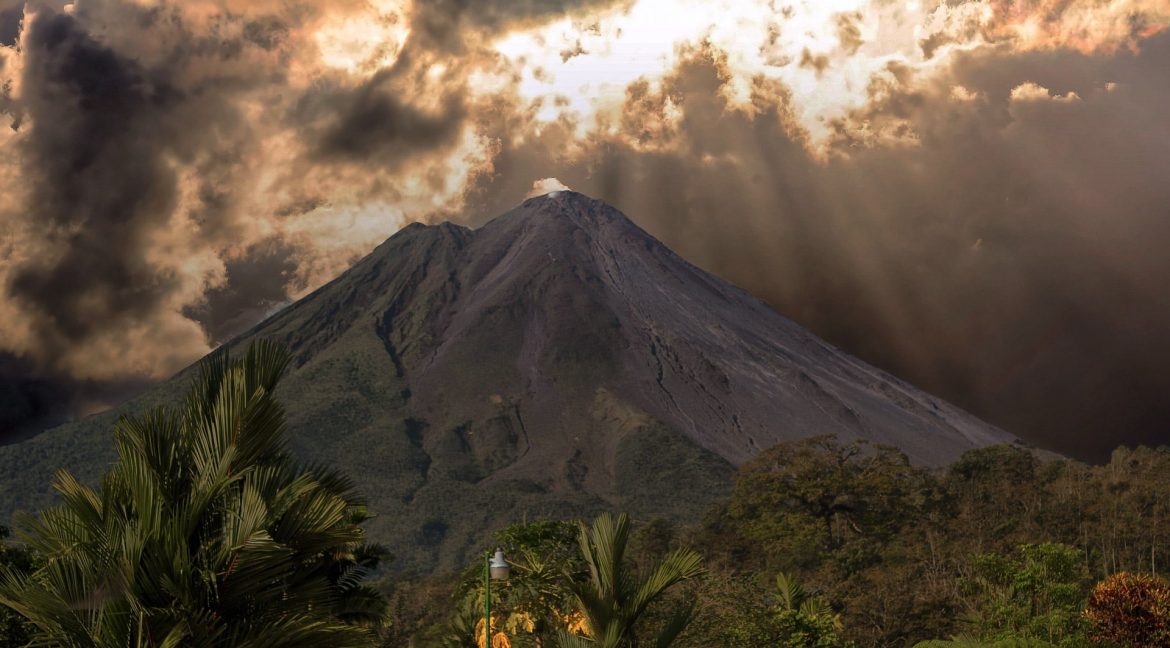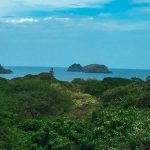The volcanoes of Costa Rica, located within Central America’s volcano-studded Ring of Fire, offer adventure and wonder, excitement and discovery. Their similarities are certainly what you’ll notice first – each and every one, volcanoes, all stretching their crater-topped cones toward the sky – but what you’ll come to love most are their differences.
Within our – and now, your – country’s borders, you’ll find everything from dry forest to wet forest to cloud forest (and everything in between). You’ll explore inactive and active volcanoes, some still belching their latest indigestion during your visit. You’ll spot monkeys and soak in hot spring. You’ll climb slopes and trek over ancient lava flows. You’ll hike to waterfalls and summit peaks. You’ll ascend to crater lakes and stare into the depths of craters. You’ll wrinkle your nose at the stench of boiling volcanic mud and scoop sky-blue mineral waters into the palm of your hand.
Indeed, the volcanoes of Costa Rica are extraordinary – and, whether you’re here for a week or a lifetime, you should answer the call to explore. See one or conquer them all. They’ll be here, whenever you’re ready.
Rincon de la Vieja Volcano
Status: Active

One of the most active volcanoes of Costa Rica – and also one of the closest to Tamarindo – Rincón de la Vieja Volcano lives within Rincón de la Vieja National Park: a destination as known for its active an eponymous volcano, as it is for its natural wonders.
The route through the park’s Las Pailas sector is one of our favorite hikes in Costa Rica (yes, the entire country!). When the park is open to visitors – and be aware that it does close, when vulcanologists suspect imminent activity – you can enjoy an easy stroll past a seasonal waterfall and bubbling mud pots, an acid lagoon and near-boiling hot springs (not for bathing!), a small volcancito and steaming fumaroles – a volcanic wonderland, literally at your feet.
Want to hike to the volcano itself? You can do that too – sometimes and under certain circumstances. Know, first, that it’s a long and challenging hike, often a half- to three-quarter day’s outing. Additionally, you should verify in advance that the hike is safe, based not only on volcanic activity but also on weather and other conditions. When the stars align, though… Oh, it’s a marvel! You’ll hike almost to the central active crater, with views to eight other volcanic points along the way.
Miravalles Volcano
Status: Inactive
Surrounded by the tropical dry forests of northern Costa Rica, Miravalles Volcano stands as the highest peak in Guanacaste, at 2,023 m (6,654 ft). Now inactive, Miravalles is what’s known as an andesitic stratovolcano, which formed 6-1.5 million years ago as a result of several successive and dramatic eruptions.
Though the volcano itself is now inactive, it’s effects can still be felt – and you’re going to love it. The perfect escape from Tamarindo, Miravalles is less touristed than Rincón de la Vieja but nearly as impressive, with several hot springs, perfect for a mineral soak, and even a waterpark if you’re daytripping with kids. On your way back home, stop off at the impressive Llanos de Cortez Waterfall!
Orosi Volcano
Status: Inactive
Tucked into the Guanacaste Mountain Range (and not the Orosi Valley, as one might assume!), Orosí Volcano is Costa Rica’s most northwestern volcano. It’s also one of the lesser-known and less touristed volcanoes of Costa Rica, in large part due to its remoteness (close to almost nowhere), size (small), and status (inactive).
In fact, Orosi is located within Guanacaste National Park, which provides access to transitional forest – wet forest to rare dry forest – and an ecological wonderland, unscrubbed and wild. To us, Orosi Volcano and Guanacaste National Park are the kind of destinations that, when visited, usher you into the club of true Costa Rica connoisseur – where few have gone but everyone should!
Arenal Volcano
Status: Active
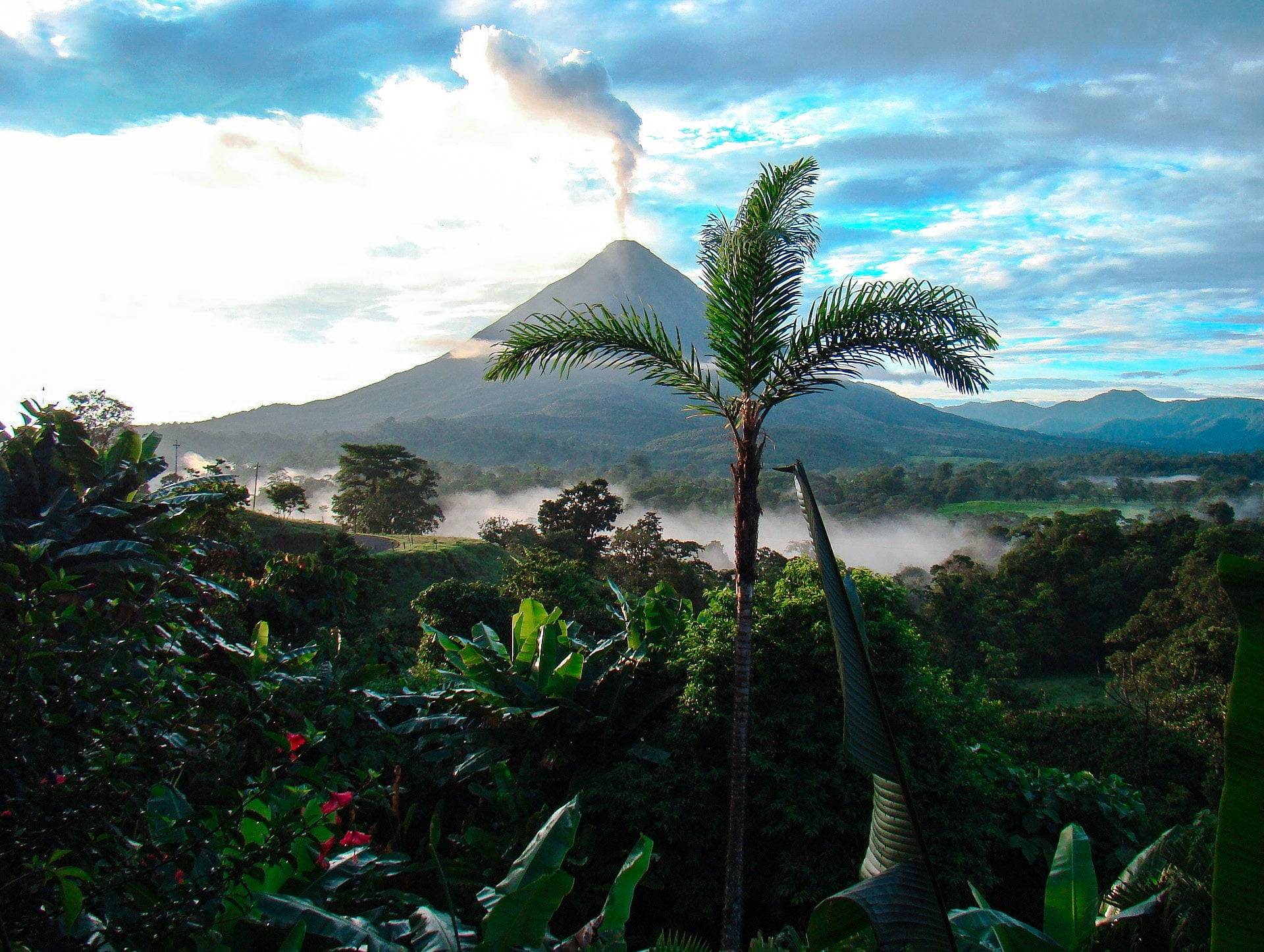
Hands down, Arenal is Costa Rica’s most iconic volcano. It’s also one of the world’s “most perfect volcanic cones,” making it one of our top must-visits, especially over a long weekend or even a week, if you have a bit of adventure running through your veins. (La Fortuna, the town at the base of Arenal, has long been considered the adventure capital of Costa Rica, due to its wide variety of adrenaline-fueled activity.)
Known for its imposing height, almost-symmetrical cone, and slope duality – lush on one side, lava-ravaged on the other – Arenal is certainly one of the more striking volcanoes of Costa Rica. Surrounding Arenal Volcano National Park is a wonderland in its own right, home to hiking and horseback riding along lush slopes and ancient lava flows.
It’s also one of the more active (although not quite like what it used to be) volcanoes in the country: Once upon a time, Arenal Volcano was considered inactive. Then, in 1968, a massive eruption wrought destruction; for decades, the volcano would spit (and occasionally spew) lava. In the last decade, however, the volcano has been on its best behavior, with only the occasional ember visible.
Chato Volcano
Status: Inactive
Everyone visits La Fortuna for Arenal Volcano, but true in-the-know residents and travelers know they’re also there for Cerro Chato – Mount Chato, aka Chato Volcano. Long inactive (3,500 years), this quiet beauty is responsible for having created the lava spills that carved out La Frotuna Waterfall – a must-visit, by the way!
Cerro Chato is a serious hiker’s volcano, requiring good physical fitness and an adventurous spirit. If you can hack it, you’ll be one of just a few to take the four-hour, steep trek up Cerro Chato’s slope. (Good weather strongly preferred.) Your reward: two peaks and a green-water lagoon, plus views and landscapes that you won’t often see in travel books and brochures.
Tenorio Volcano
Status: Inactive
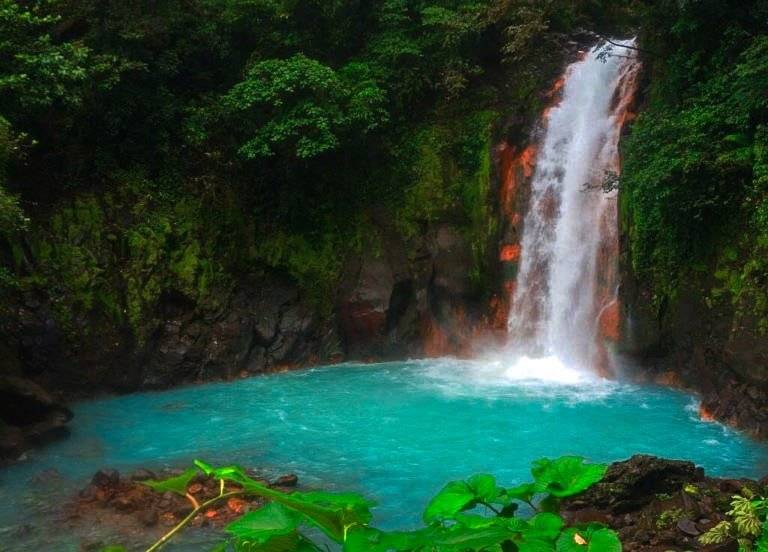
While you’re in the Arenal area, you absolutely must visit Tenorio Volcano. Haven’t heard of it? That’s not surprising, as the volcano and its eponymous national park, Tenorio Volcano National Park, is best known for one of its sights: the incredible, blue-watered Celeste River and waterfall.
And, while the blue-hued river – and yes, it really is blue; scoop some into your hand, and you’ll that the mineral-rich waters are, indeed, true blue – is often considered the main attraction, the park also offers hot springs and teñideros (stained rivers), fumaroles and lagoons, rain forest and cloud forest.
The hike is also one of the more enjoyable, wending and winding through a wide variety of sights and sounds. The wildlife – from monkeys to dozens of bird species – is also a big draw, especially when paired with that sky-blue river. Because we know you’re here for that, too.
Turrialba Volcano
Status: Active
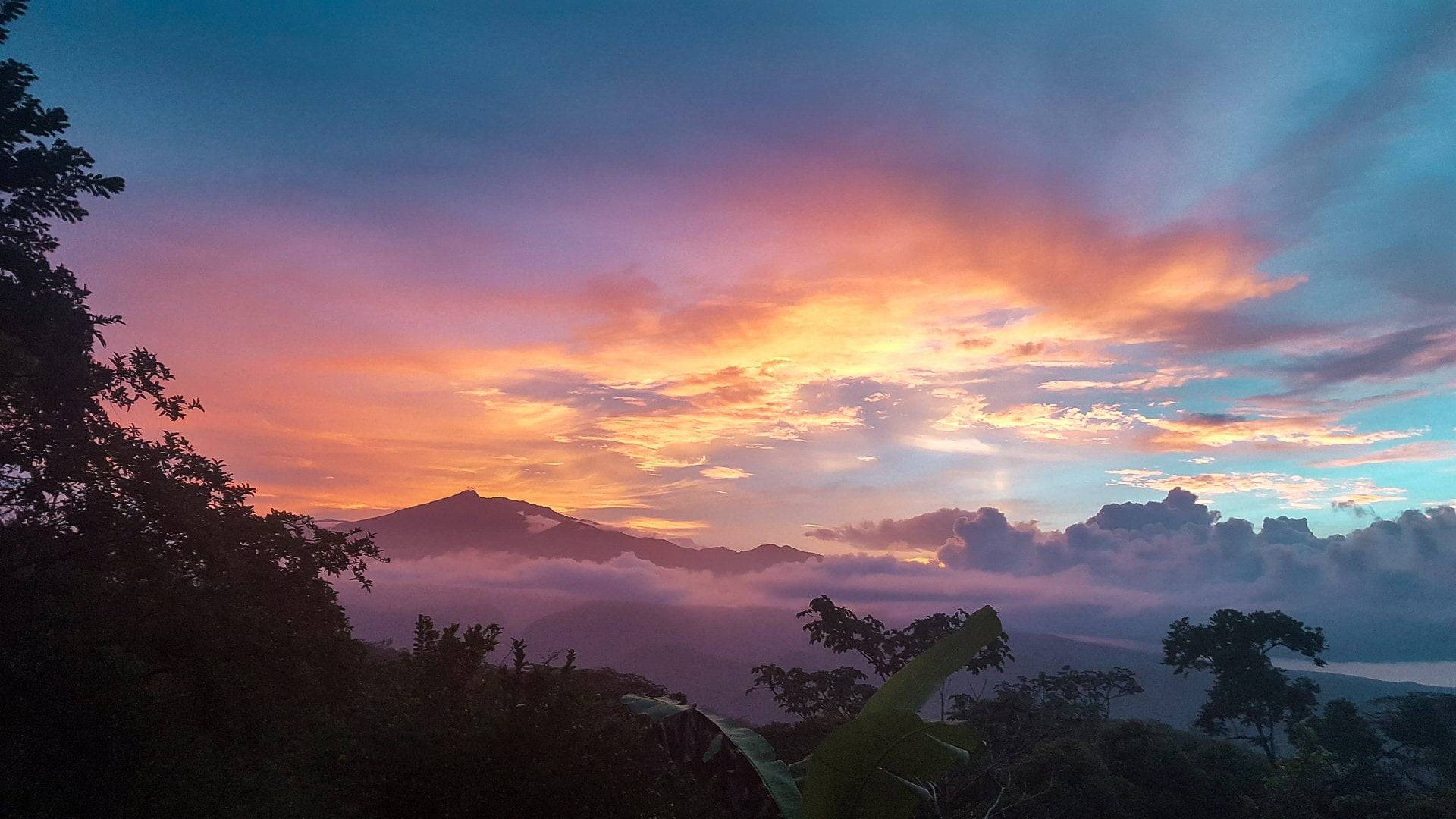
Long considered a fairly inactive volcano – a few ashy burps, here and there – Turrialba awoke with a fury in 2015, when it erupted to spew ash throughout the Central Valley. Since then, Turrialba has remained one of the more active volcanoes of Costa Rica, with regular activity and a handful of major events.
If you want to visit Turrialba, you’ll have to keep your eyes on the local news: The park is usually closed for safety. That said, its surrounding Turrialba Volcano National Park is often open, granting you excellent views to ancient Turrialba and its ashy eruptions. This is also a perfect daytrip to combine with a visit to the scenic Orosi Valley and Irazu Volcano. Speaking of…
Irazu Volcano
Status: Active
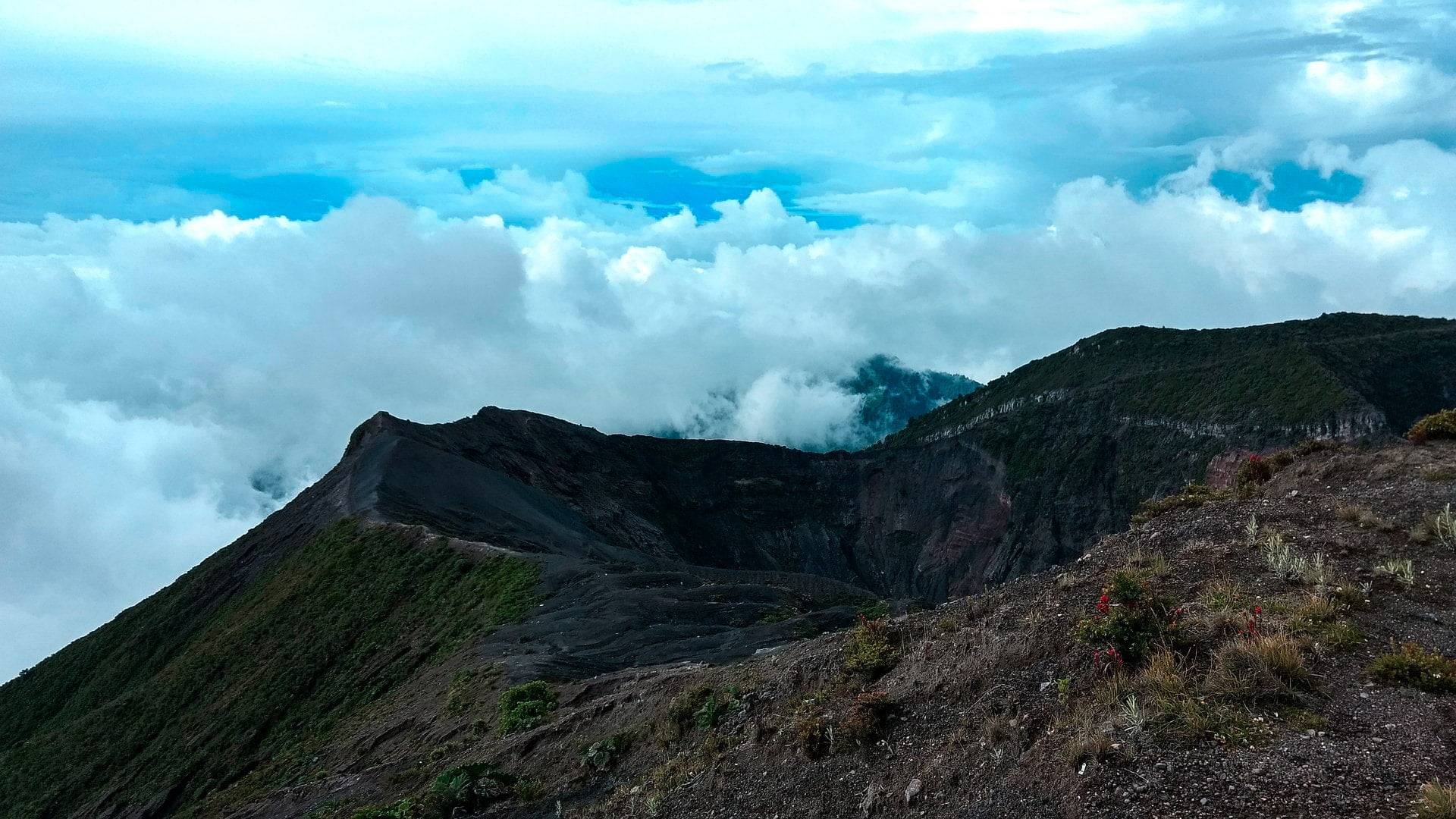
One of the most iconic volcanoes of Costa Rica, Irazú’s emerald-hued lake often graces travel websites and postcards. As it should – it’s beautiful! But did you know, depending on volcano conditions, its lake can disappear… or even switch to a crimson red?
It’s true: Irazu Volcano delivers a showy display, from its green-water lake and active craters, to its scrubby moonscape and ocean views: yes, on a rare clear day, you can see both the Pacific and the Caribbean! And while you’re at it, you’ll hike Irazu National Park’s mountain trails, which weave through nearly 6,000 acres of high-altitude mountain paramo. It’s like almost no other place in Costa Rica, or even the world, and it’s somewhere every visitor and resident should visit.
Poas Volcano
Status: Active
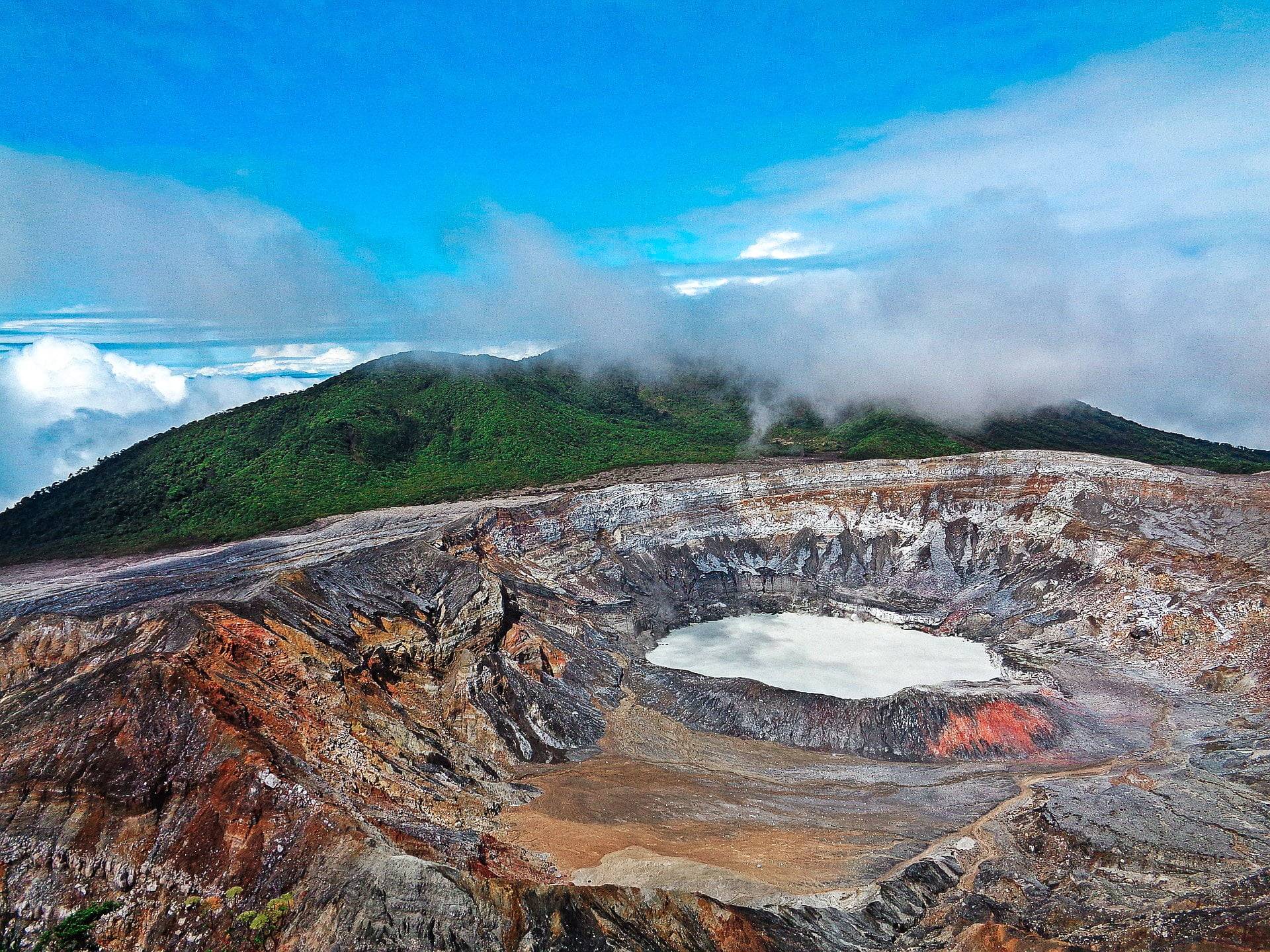
If you’re ever in the western Central Valley (or heading in for a flight out of SJO), then Poás Volcano can be a perfect side-trip. The volcano with a blue-hued crater lake, Poás is another Costa Rica icon and a perfect escape – if you can get in.
Due to a recent uptick in activity, Poás Volcano National Park is open (usually) but reservations are required, as of mid-2021. Your reservation earns you a time slot to visit the park and its volcano – for a limited time, with a hard hat. (Costa Rica takes its volcano safety seriously!) It’s a short visit but an exciting one – and an every-changing landscape, thanks to the volcano’s current activity.
When you visit, the crater may be dry. The cold-water lake may or may not be full. The volcano may be belching. The landscape could be draped in clouds. Welcome to an extreme natural adventure.
Barva Volcano
Status: Inactive
When we think of Central Valley volcanoes, we most often think of the big three: Poas, Turrialba and Irazu. But that thinking ignores one deserved sight that flies under the radar: Barva Volcano, which is very worthy of a visit!
Barva Volcano, housed within Braulio Carrillo National Park (Barva sector) is an ancient complex volcano. (Last confirmed eruption: circa 8,000 years ago.) You’ll see its iconic hills – las Tres Marías, or three Marys, as they’re known – on your drive toward the Central Valley, and you’ll love to hike its slope.
Note that, as of publication, the park is currently closed, but not for the reasons you think: Due to COVID-19 policies requiring contactless payments, paired with the park’s rural location (where there’s no internet, phone, or cellular service), there’s no way to process park entry payments. But, stay tuned! The park will surely re-open again soon.
What’s on Your Bucket List?
Whether you’re here for a visit of have made Costa Rica your home, exploring is both a right of passage and a pleasure.
So, what’s on your bucket list? What can’t you wait to see and experience? Where or what would make you feel like a true, honest-to-goodness new local?
We were you once, too. Over the years and decades, we’ve explored almost every corner of the country and earned our status as seasoned locals. And at Blue Water, we’ve also built a reputation for 5-star service – from our incredible off-the-beaten-path adventures to our great communication and helpful concierge services – and we make it our mission to re-earn that reputation, with every adventure we take you on.
So, please get in touch. We’re sticklers for responding within 24 hours. Yes, even if you’re reading this post into the wee hours; we’ll respond within the day! And we look forward to it!
